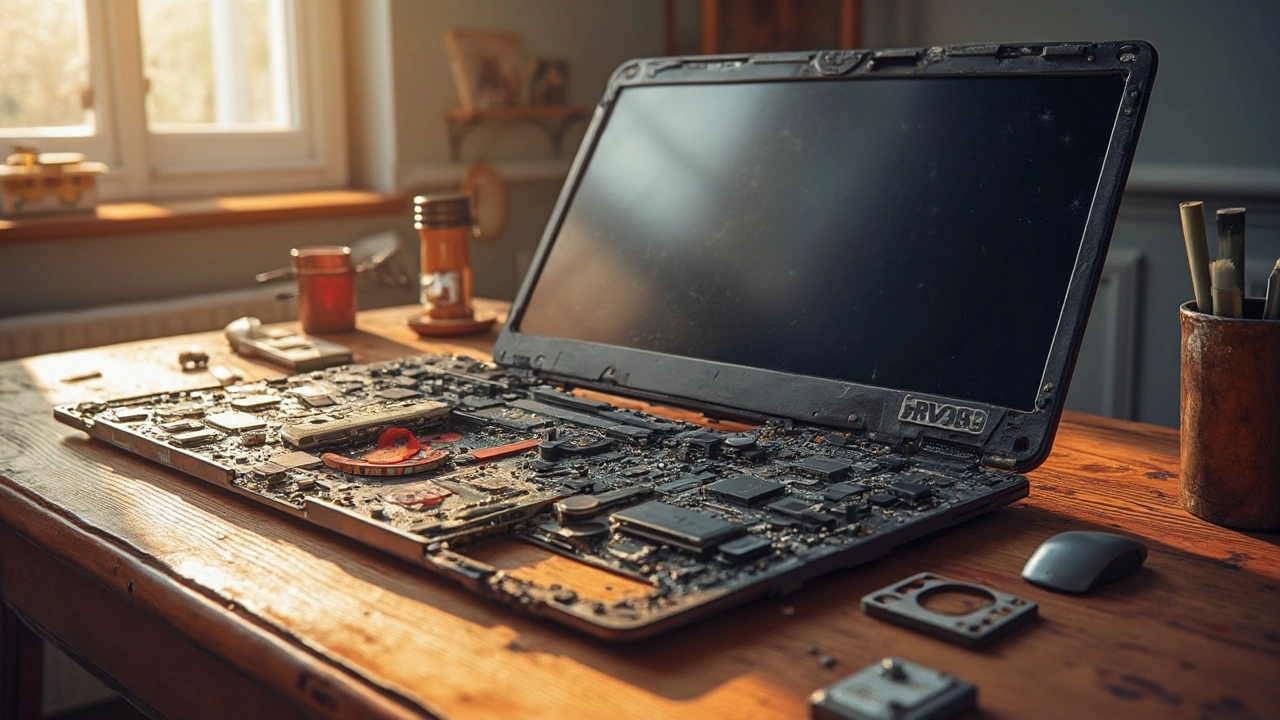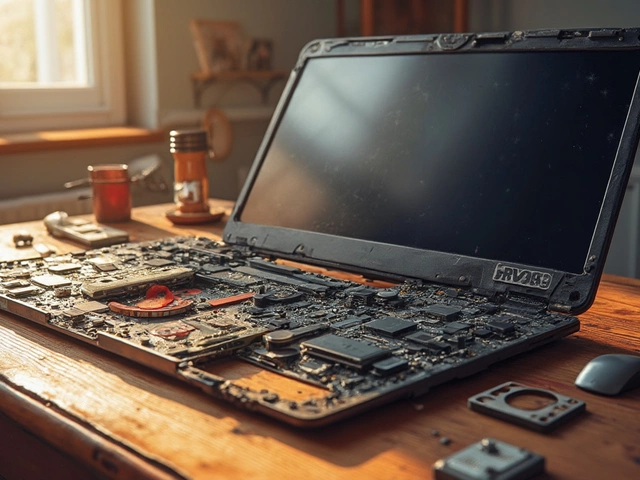If you've ever been hit with a surprisingly high laptop repair bill, you're not alone. Most people find that the cost of fixing a laptop can alarm them more than the damage itself. But why are some repair costs so steep? It usually boils down to a few key components that are both complex and pricey to replace.
One of the top culprits is the laptop screen. Now, you might think, it’s just glass, right? Not really. The screen is a delicate, tech-heavy piece that serves as your window to the digital world. Any damage can be both intricate and expensive to fix.
Then there's the motherboard, the beating heart and brain of your laptop. A damaged motherboard costs a pretty penny because of its intricate build and crucial role in keeping your machine running smoothly. We'll explore this in more detail as we unravel the significant price factors of these repairs in the following sections.
- Understanding Cost Factors
- The Screen, More Than Just Glass
- Motherboard: The Brain
- Tips to Avoid High Repair Costs
Understanding Cost Factors
So what makes laptop repair so financially daunting? Let's break it down. First off, laptops are intricate machines. They pack a ton of sophisticated parts into a tiny space, which means any interference needs a skilled hand. This expertise is usually where a big chunk of your money goes.
A key factor in repair costs is the price of the components. Replacement parts are often the same as, or even more than, the cost of the laptop when new, especially if your laptop is a high-end model. This is particularly true for crucial components like the screen and motherboard.
Another layer of cost comes from the brand. A repair for a MacBook might set you back more than a similar repair on a less expensive laptop due to proprietary parts and brand-specific service plans. Often, brands like Apple or Dell create parts that aren't interchangeable with other models, driving up costs due to exclusivity.
Laptop screens are more than just glass; they're composed of delicate materials and intricate wiring. Replacing a screen often involves precise labor, further increasing the expenses.
Motherboards are another biggie. They are complex bits of tech, and any fault might mean replacing the entire board rather than just the faulty component. They're like the nerve center of your laptop, orchestrating functions between all other components, hence their repair is never cheap or simple.
To give you a clearer picture, here's a quick stat: a high-end laptop motherboard can cost anywhere between £200 to £600, not inclusive of labor costs, which can add another £50 to £100.
| Component | Approximate Cost |
|---|---|
| Screen Replacement | £125 - £300 |
| Motherboard Replacement | £200 - £600 |
Understanding these factors can help you make informed decisions about whether to repair or replace your laptop and keep a lookout for warranty conditions covering these hefty repairs. A little knowledge here could save you a lot of money!
The Screen, More Than Just Glass
When it comes to laptop repair, the screen often leads the list in terms of expense. It's not just a piece of glass; it’s a complex component loaded with high-resolution pixels, backlighting, and sometimes even touch functionality. All these make it one of the most costly parts to repair or replace.
Now, why is this so? Well, first, high-quality screens are expensive to produce. If your laptop uses a fancy Retina display or a 4K panel, the cost shoots up even more. Replacing such screens can burn a hole in your pocket—sometimes nearing the cost of a new laptop!
- Screen Type: Non-touch screens are generally cheaper to fix than touch screens due to fewer components.
- Size and Resolution: Larger screens and those with higher resolutions are pricier given their complexity.
- Technology: Screens with OLED technology command a higher price because they offer better color and thinner displays.
Should you crack your screen or face display issues, the repair shop often has no choice but to replace the whole display unit. That's like changing all four tires of a car when only one is flat! And here's a fun tidbit: the labor involved in changing a screen is no small feat either, given the delicate electronics and snug fittings involved.
To avoid such costly fixes, a screen protector and a good laptop case can be your best friends. Simple measures like these can save you from hefty laptop screen repair bills down the line.

Motherboard: The Brain
The motherboard is like the command center of your laptop. It's where all the connections happen, linking the crucial bits that make your device tick. That’s why any hiccup here can send repair costs soaring. If you consider your laptop as a body, the motherboard is definitely the brain. And, you know, brains are complex to sort out!
The main reason it's so expensive to repair or replace is due to its intricate design. It houses the CPU, RAM slots, and other essential circuits. Not to mention, when things go awry, diagnosing the exact fault is like solving a tricky puzzle. Sometimes, a simple minor part like a capacitor triggers the whole issue, yet isolates fixes are rare—the entire board often needs a swap.
It doesn’t help that the motherboard is integral to everything else. Unlike a laptop battery or charger that you can easily replace, the motherboard is like the heart tucked deep inside the circuitry maze. Reaching and repairing it requires hours of labor, which can account for roughly 75-85% of the repair cost.
| Component | Typical Replacement Cost |
|---|---|
| Motherboard | £200 - £500 |
| Laptop Screen | £100 - £300 |
| Battery | £50 - £150 |
Swinging back to how you might spare your wallet, preventive care is key. Regular cleaning to prevent dust buildup, using a surge protector to avoid electronic shock, and treating your laptop with care can extend its life. After all, who wants to pay hundreds just because a stray coffee drop met the circuit board?
Tips to Avoid High Repair Costs
Nobody likes spending big bucks on unexpected laptop repair bills. But there's good news—you can take steps to keep those costs in check. Let's break down some practical tips to help you dodge those hefty repair fees.
First off, handle your laptop with care. Sounds simple, right? But it's easy to get careless. Use a good-quality case when you're on the go. A snug sleeve helps prevent scratches and cushioning softens drops.
- Avoid snack-time disasters: Keep liquids and food away. One spill can lead to a costly screen or keyboard replacement.
- Keep it cool: Laptops hate heat. Ensure proper ventilation, especially during heavy usage. Consider using a cooling pad if you notice your laptop getting toasty.
- Stay updated: Keep your software up to date. Regular updates can patch issues that might otherwise lead to bigger problems.
- Invest in anti-virus software: A good anti-virus tool can save you from malware that can harm your motherboard and other components.
- Regular check-ups: Like a car, your laptop benefits from regular maintenance. Clean out dust from vents and fans with compressed air.
Finally, think about repair vs. replace. Sometimes replacing a component or even the whole laptop can be more economical in the long run. But knowing when to call it quits is key.
Follow these simple steps, and you'll be far less likely to face expensive surprises the next time something goes wrong.




